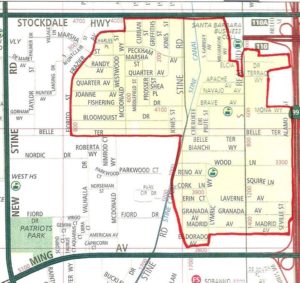In April 2014, the Kern County Board of Supervisors approved a spay and neuter program targeting specific zip codes. I was excited to see the interest, especially for someone like myself who works with Geographic Information Systems (GIS) and spatial solutions.
However, it did make me cringe when the topic of zip codes came up. I say that because while it was a good start, it’s flawed in so many ways. Zip codes are good for delivering mail, but not for delivering targeted services.
Fast forward to 2016, and the recent No Kill Shelter presentation by Nathan Winograd. Speaking to those in the know, GIS is still on the radar of Animal Services, and making progress, albeit slow.

For example, using a hand-drawn boundary map of qualifying areas for specific services is good but so outdated, especially when there are free solutions, and talent out there!
With the technology available now, it’s not difficult to create a live, online map with a digital boundary and the ability to search an address.
Not only could this be used by citizens, but also by organizers and non-profits to verify residency.
On top of that, Kern County has such a strong GIS community that we should be at the forefront of using spatial analyses in animal services.
We should be analyzing collected data to find out exactly, down to neighborhoods, where service efforts should be concentrated.
Sure, getting accurate spatial data is tough, but it needs to be done because without a spatial component, we’ll continue down the road of using zip codes, which is not a good use of resources.
Using tools such as finding hot spots (density layers), trends (directional distribution), and maybe even why things are happening in specific areas (regression modeling) could greatly benefit both local government and organizations to make better decisions.
To learn more about using GIS in animal services, below is a YT video by Maddie’s Fund. While long, it’s a good watch and example of what we could do in our community.
And while throwing this all out there, why not talk about having an annual animal/pet summit in Kern County?
It could be a day of presenting ideas, theories, and maybe even good data analysis which could help our community continue the great progress it’s already making toward Kern’s pet communities!
[su_youtube url=”http://youtu.be/1WRy64x-RRs” width=”480″ height=”360″]
